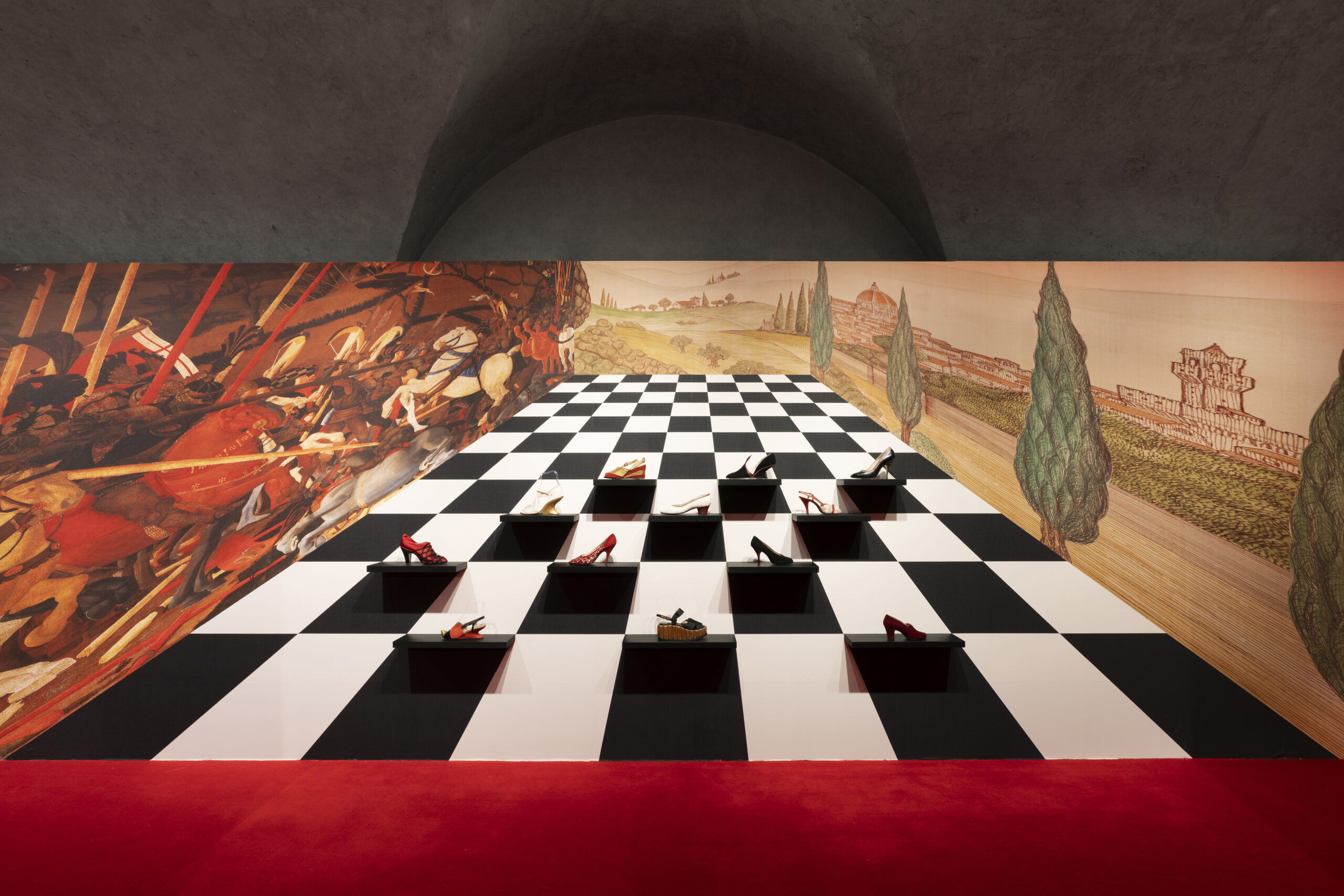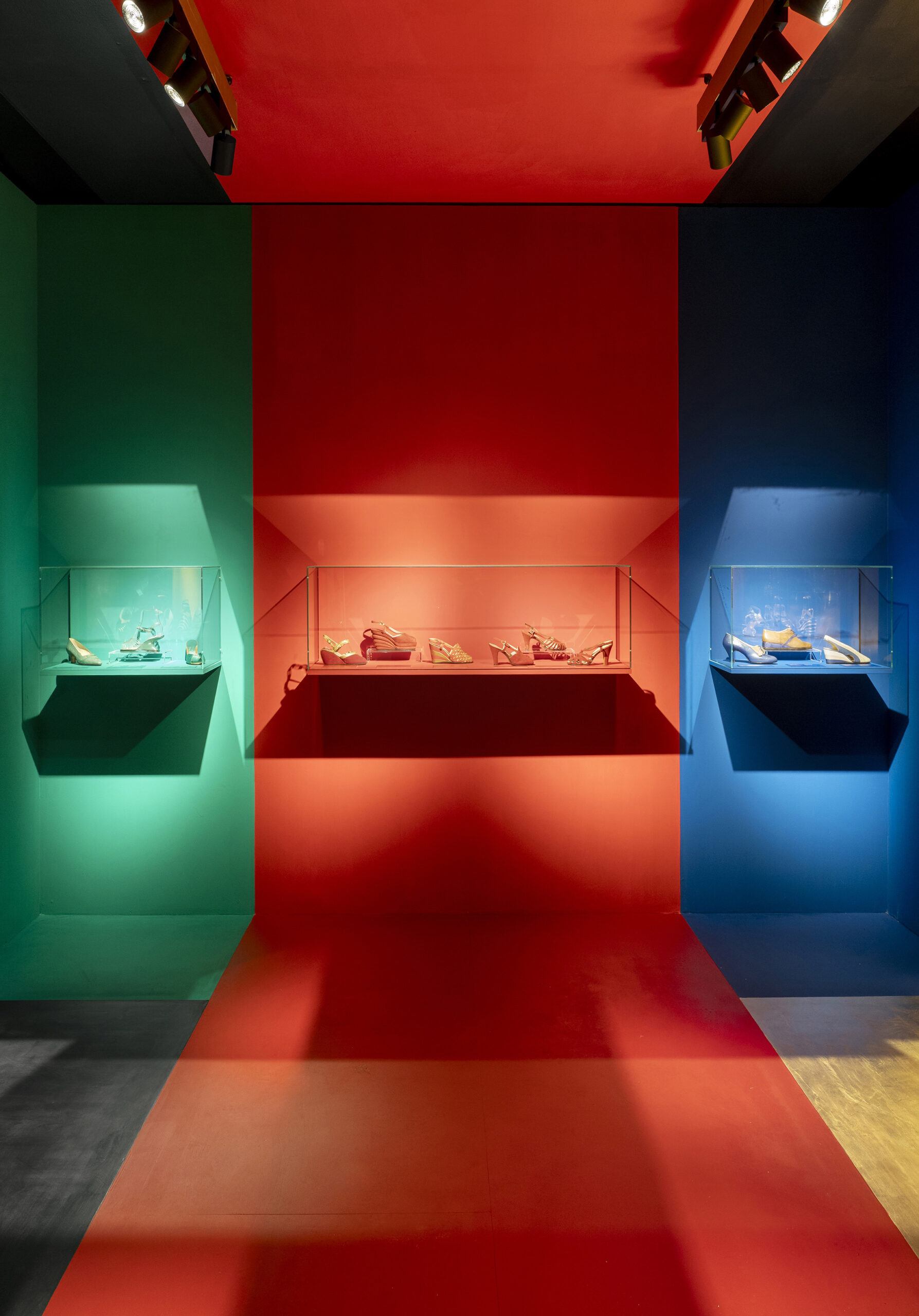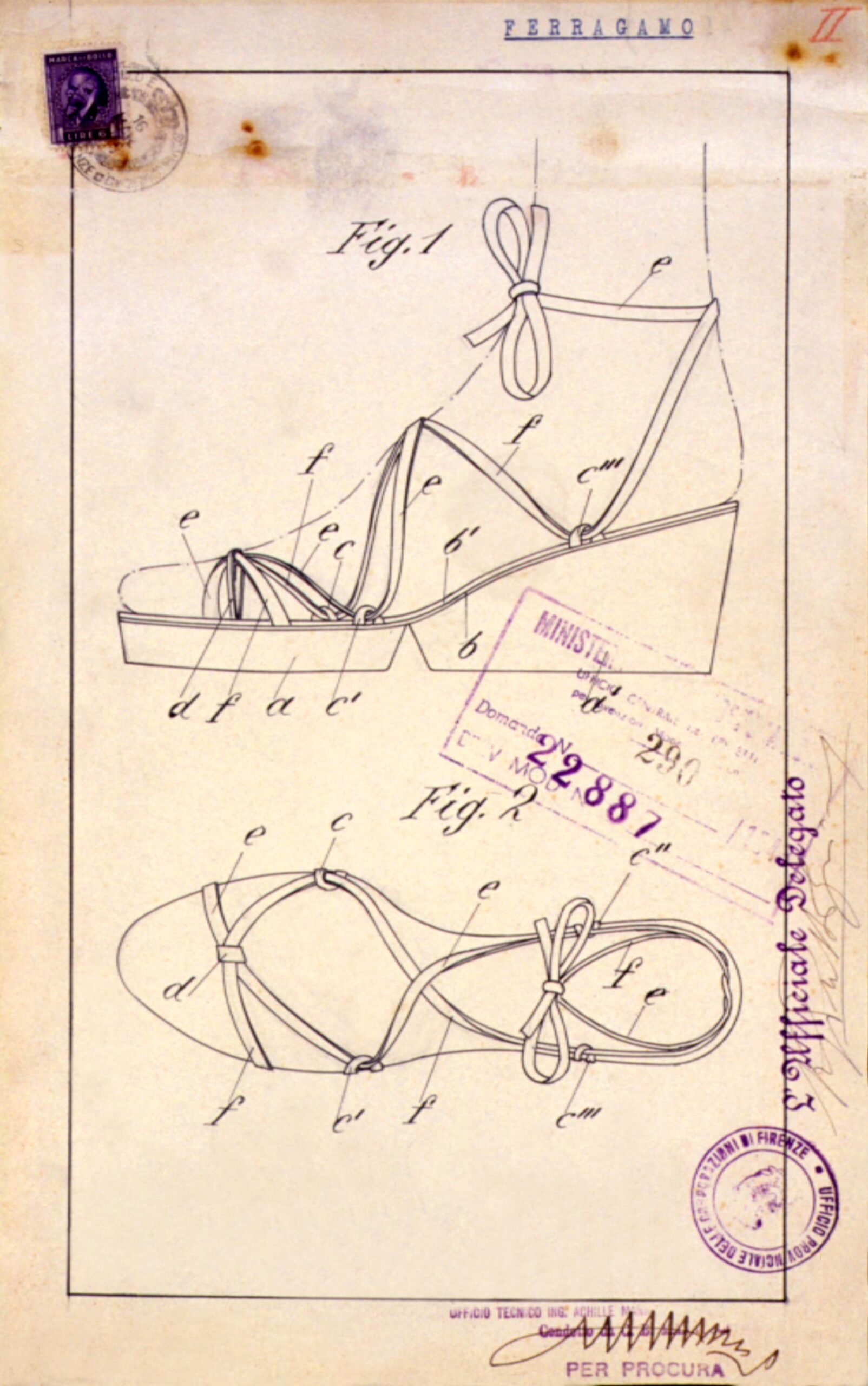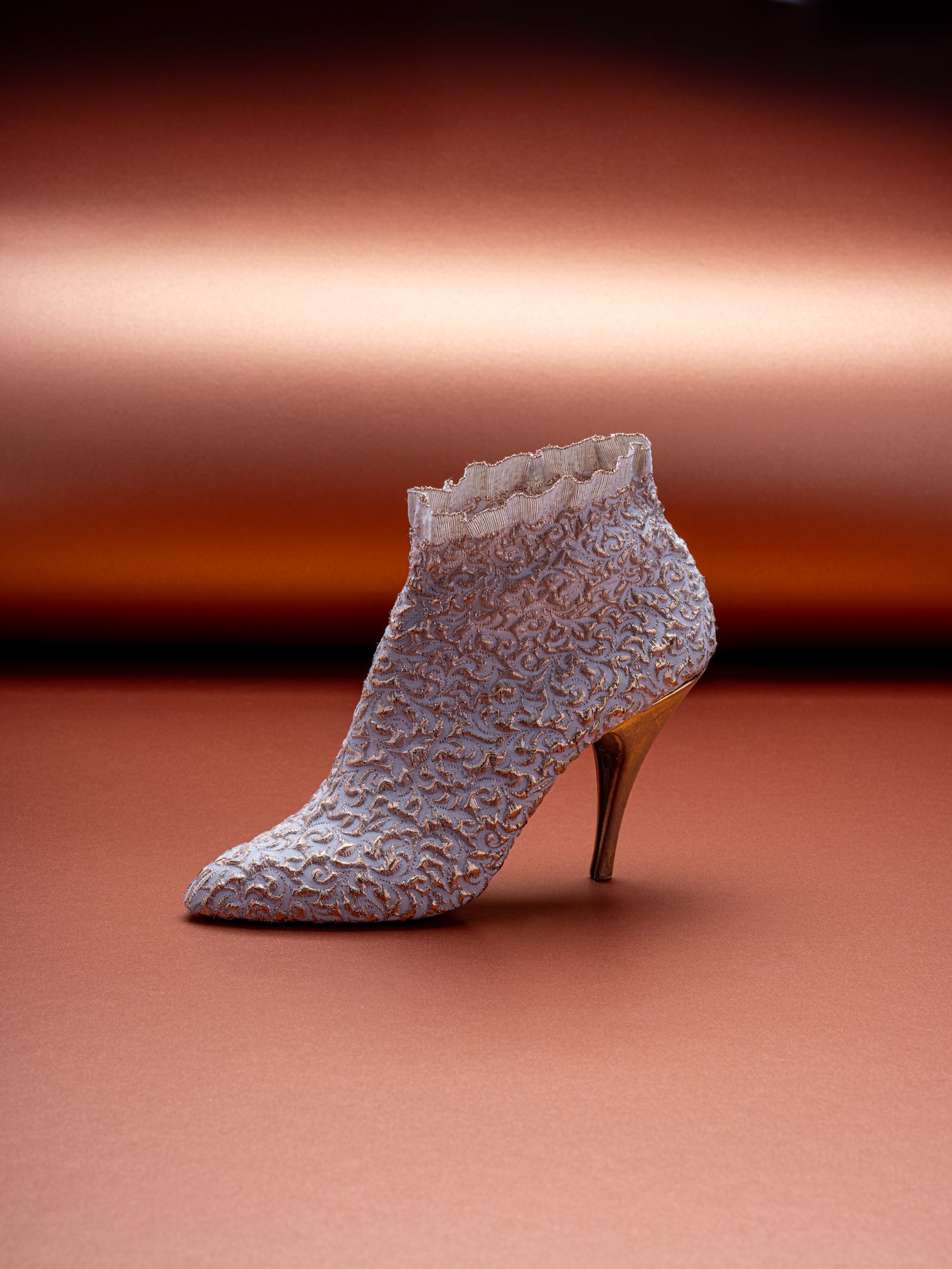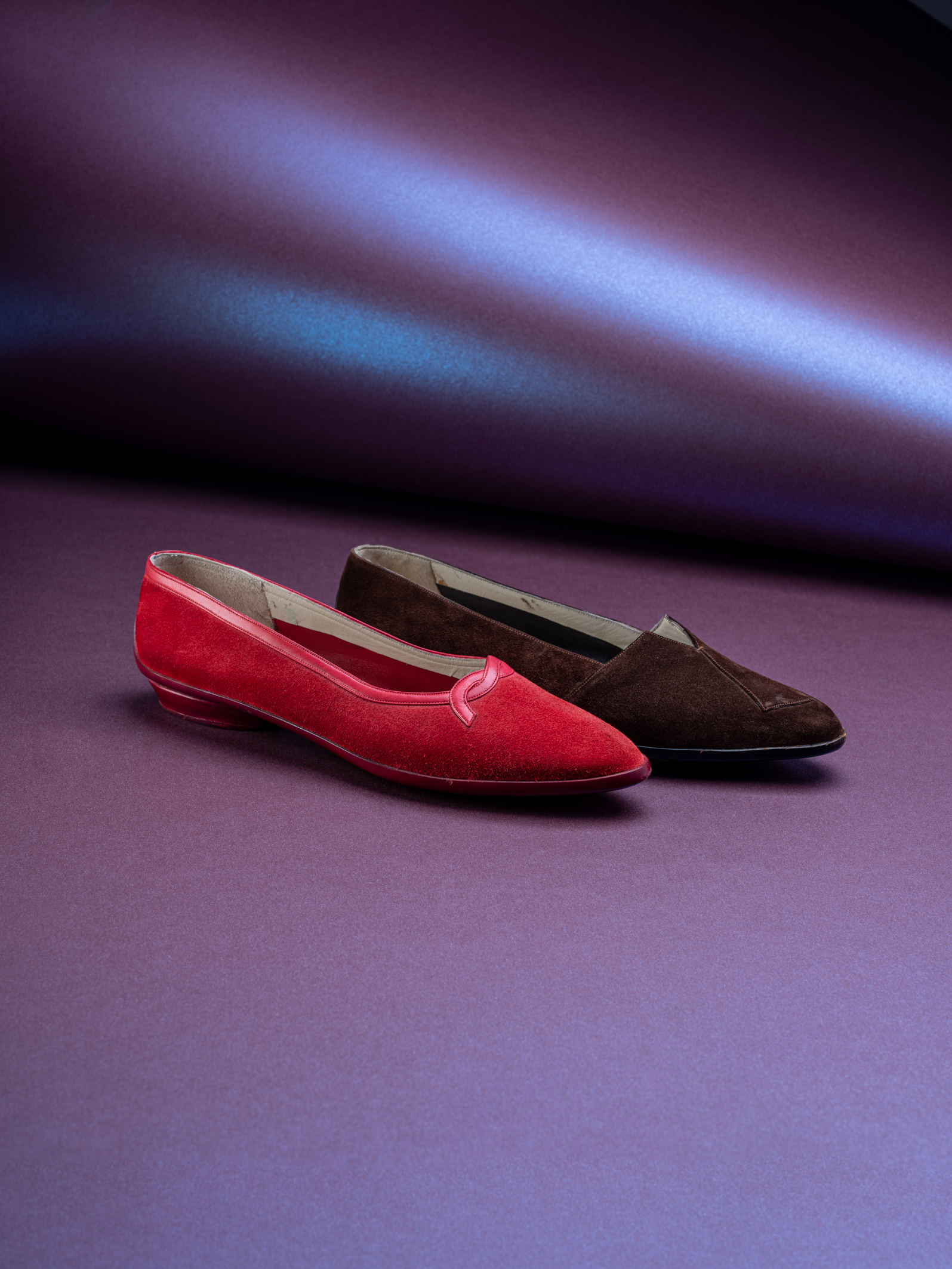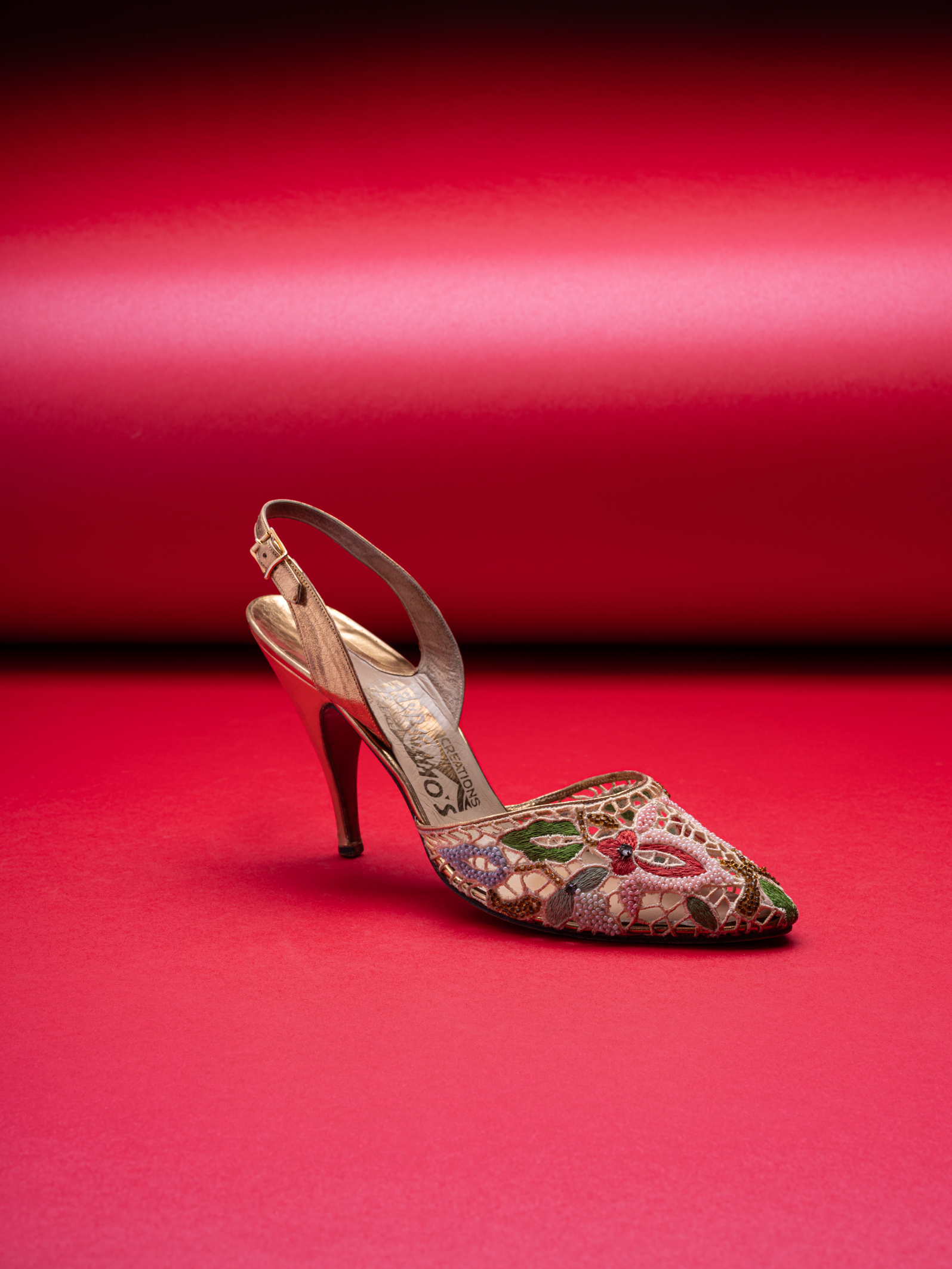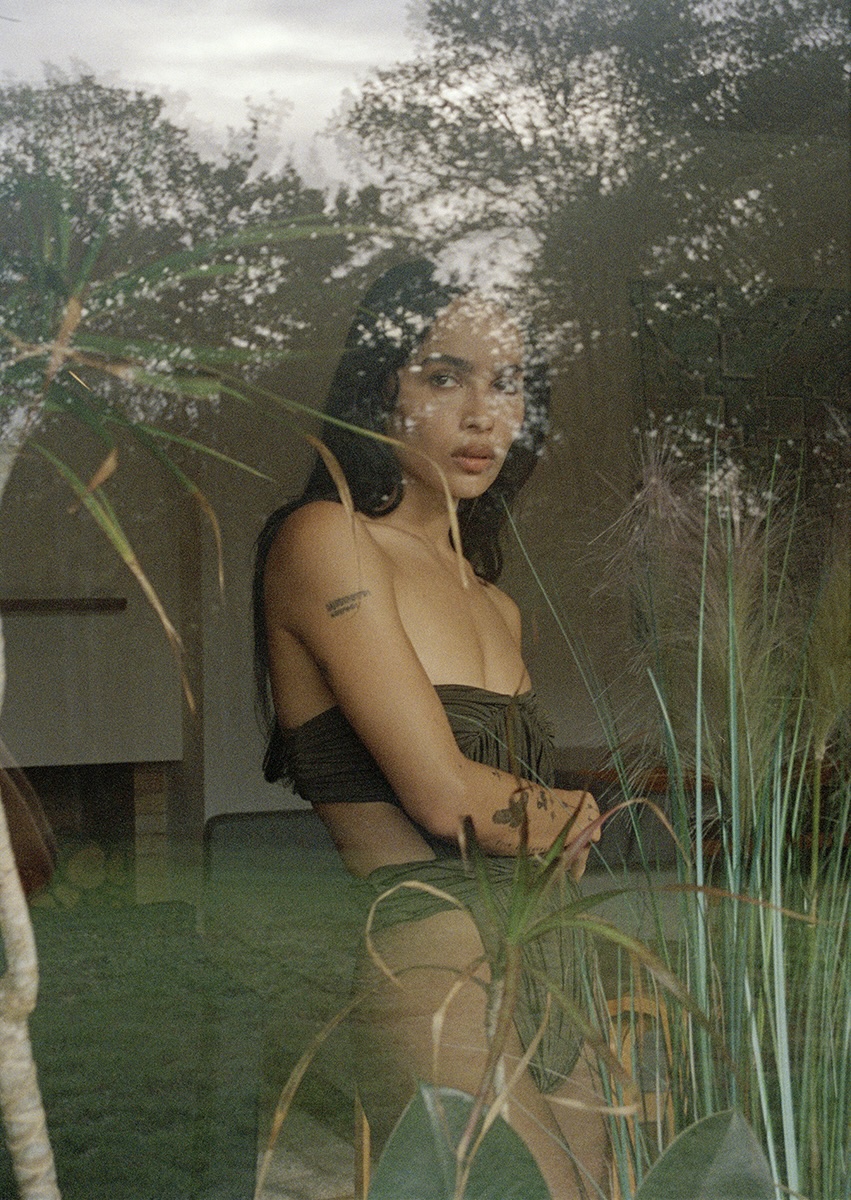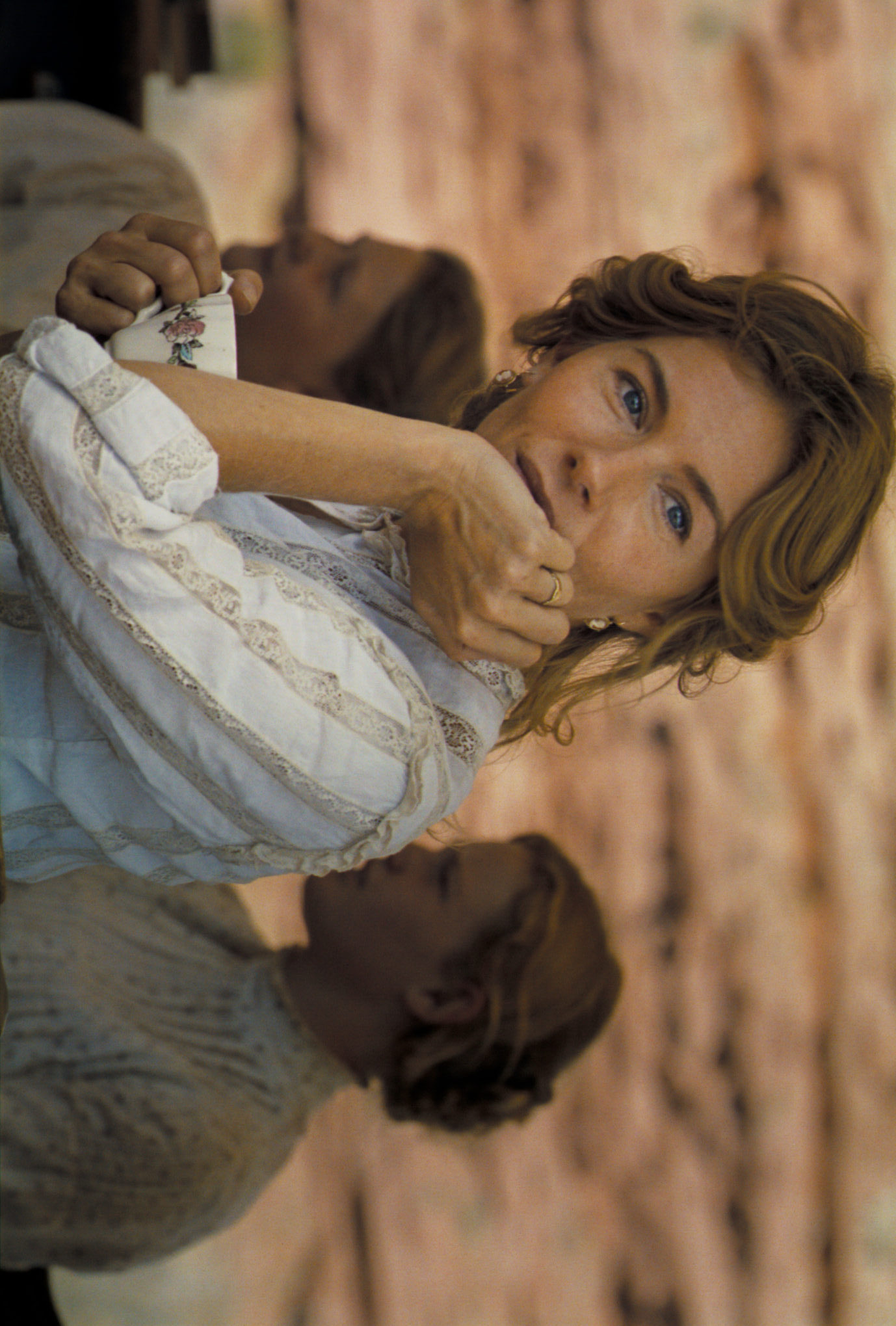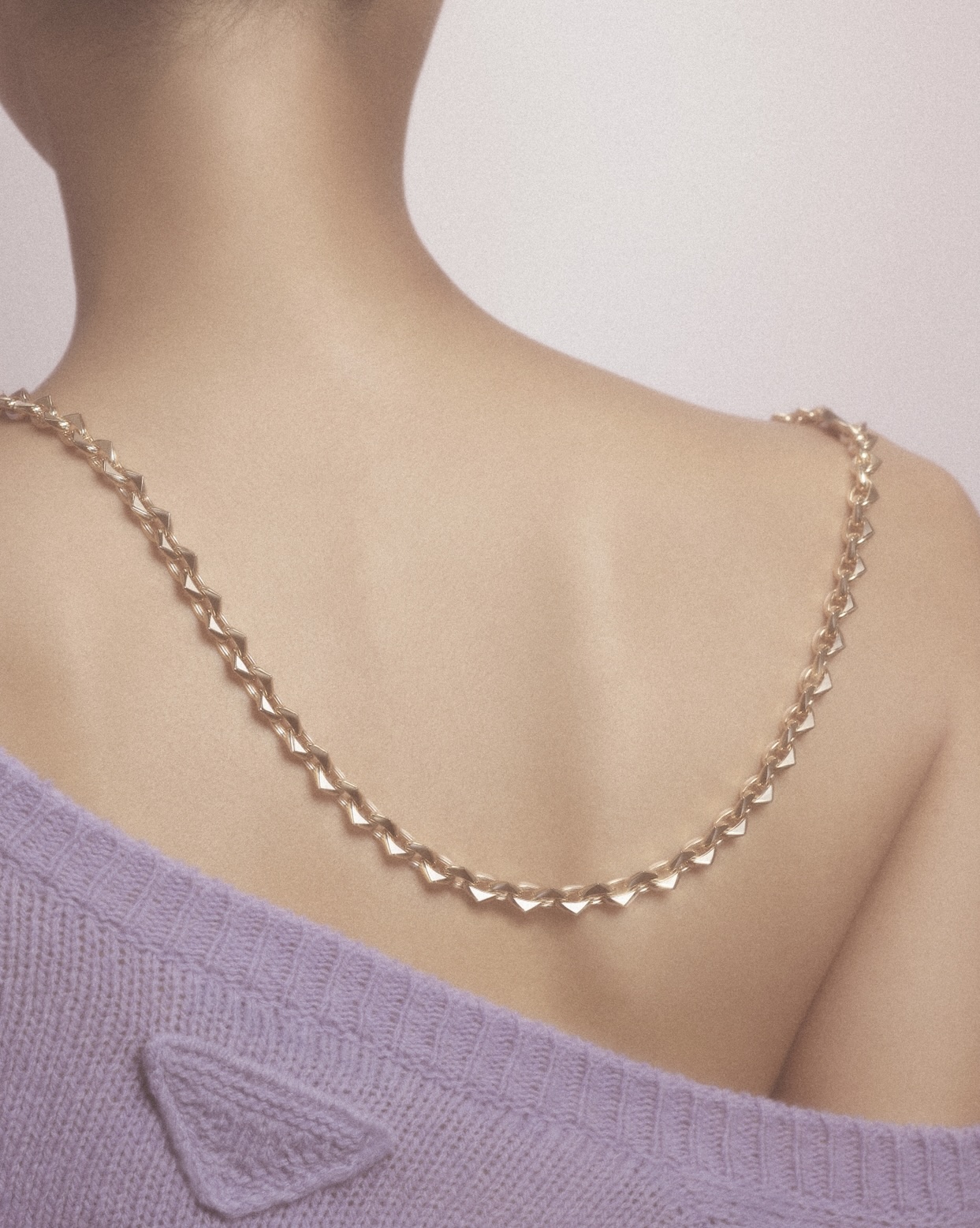The Salvatore Ferragamo Museum located in the heart of Florence pays homage to the Italian Maison to celebrate 100 years since the opening of the first Ferragamo shop in Hollywood. From that moment on (1923) Salvatore Ferragamo would collaborate with the greatest protagonists of cinema and theatre, becoming to all intents and purposes “the shoemaker of the divas”. The Salvatore Ferragamo 1898-1960 project was created to retrace the history of the great craftsman and to recall the first retrospective presented in 1985 at Palazzo Strozzi, a travelling exhibition hosted by prestigious venues all over the world. The exhibition on Ferragamo proved pioneering in that it brought the beginning of a new way of looking at fashion, as the bearer of a cultural message, intrinsic in values and meanings.
The time span examined in the exhibition Salvatore Ferragamo 1898-1960 is the same and covers the years from 1898, Ferragamo’s date of birth, to his early death in the summer of 1960. Although the curatorial perspective and choice of content suggest to all intents and purposes different considerations between the two exhibitions. In the exhibition, shoes are the protagonists, presented not only for their aesthetic value, but as documents that recall Ferragamo’s craftsmanship, entrepreneurial ability, passion for colours and creative flair. It is an exhibition that brings to light the many facets of this creative personality and his constant inspirations drawn from art and ancient culture. By comparing the object, the document and the thought, the institution conducts a backward investigation into the role of the Ferragamo Museum and its own practices staged in the two exhibitions, as they span completely different years. There are nine sections in the exhibition, divided as follows: 1898-1960, Hollywood Boot Shop, Materials, Inspirations, Architectural Shapes, Patents, New Renaissance, Creativity in Colour, Shoes and Famous Feet.
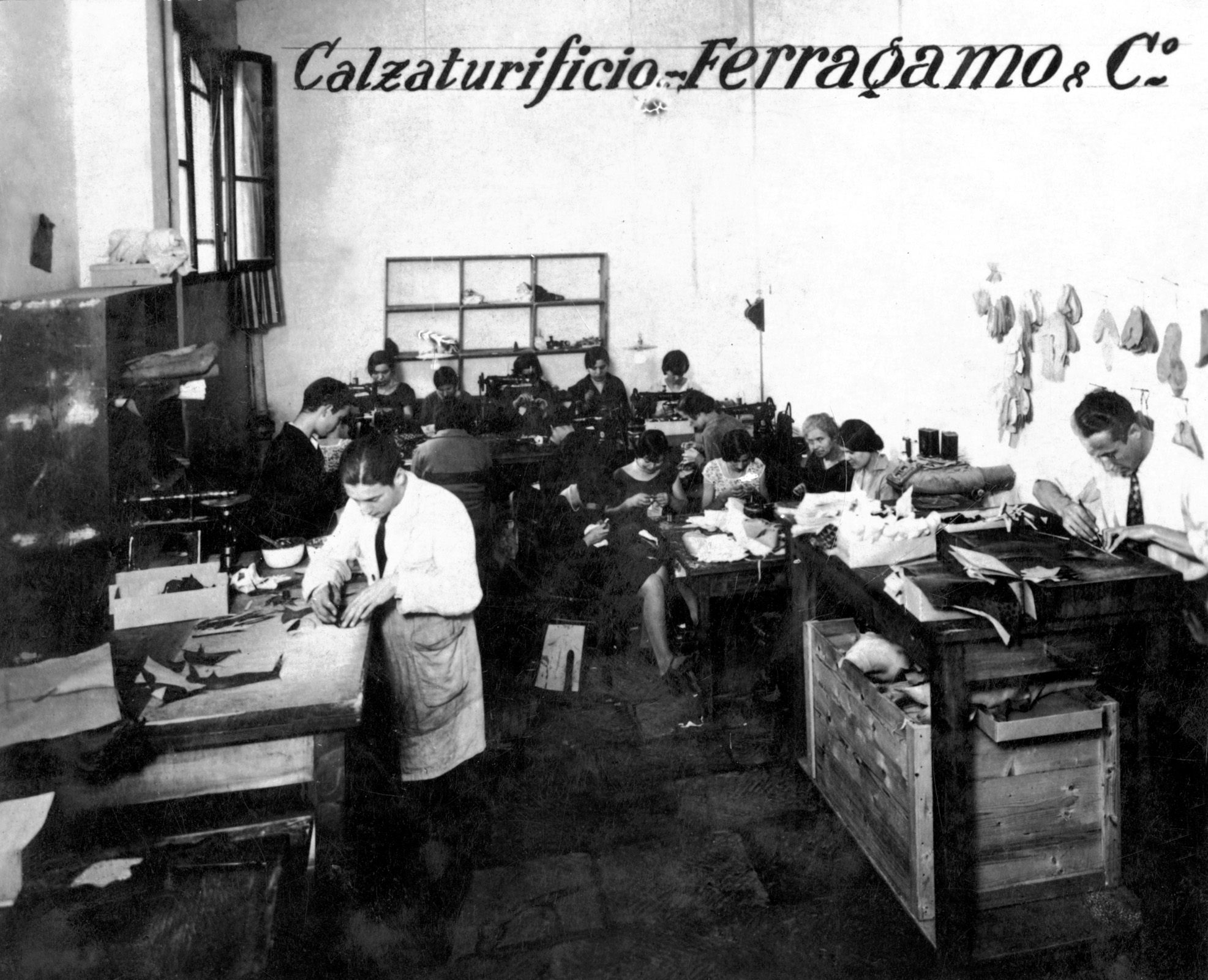
That mental attitude always ready to absorb the spirit of the times has never abandoned him, showing not only influences but also analogies with contemporary artists and designers, who in different fields arrive at aesthetic and technological solutions close to his own.
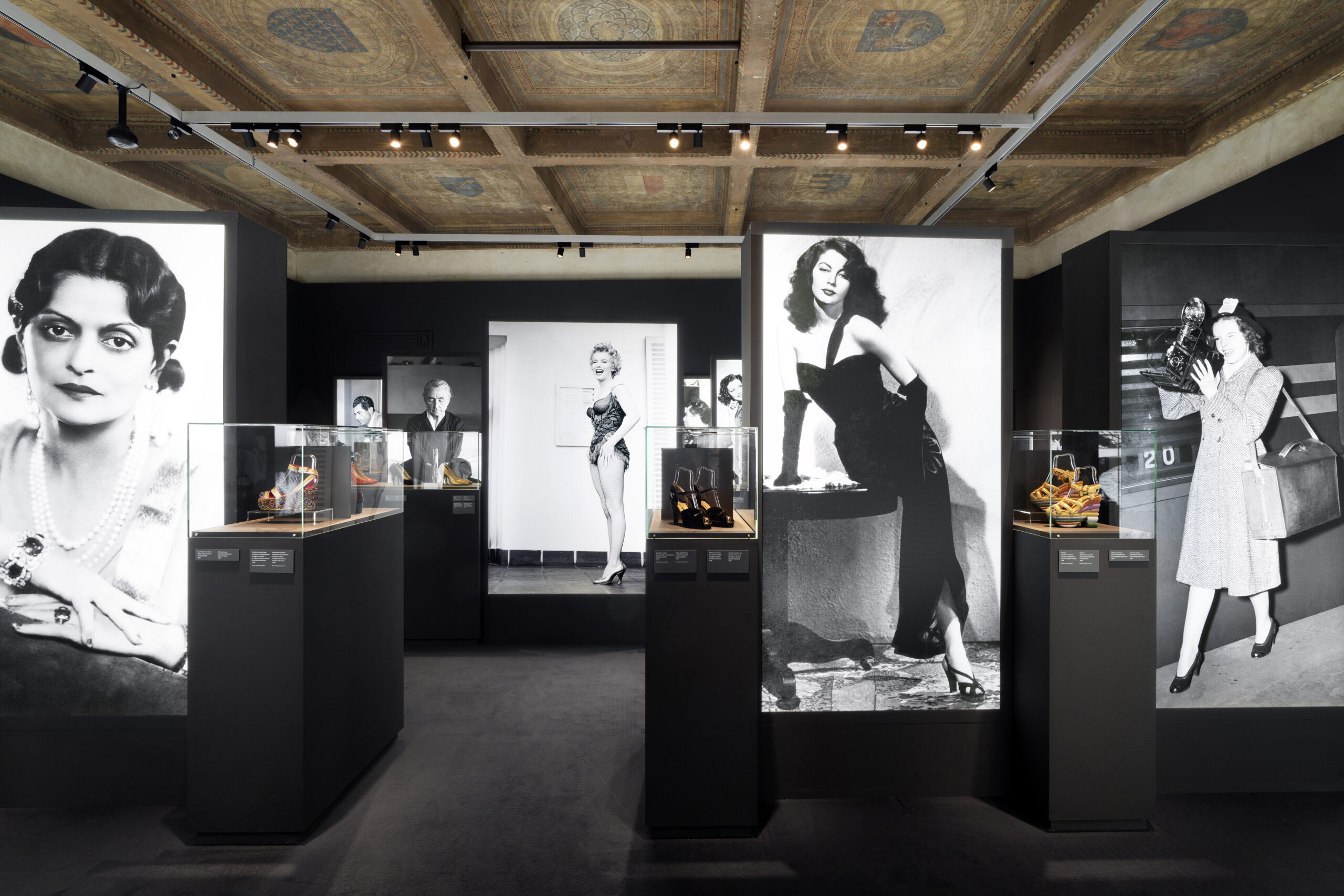
The first section of the exhibition is dedicated to Ferragamo’s biography and brings together information, historical data, documents and objects – all the fruit of 38 years of research, tracing a real life, a witness to the first half of the 20th century, between two wars and two worlds: Italy and America. The biographical documentation will lead the exhibition’s leitmotif, namely the desire to convey to the visitor the profound sense of Ferragamo’s life and extraordinary dedication to his work. Hollywood Boot Shop is the beating heart of the Florentine Museum’s exhibition, as it evokes the American period through photographs, films and original footwear. It was in 1923 that Salvatore chose a shop on Hollywood Boulevard whose name he did not change but whose furnishings and entire aesthetics he transformed. These were years in which Los Angeles aimed to establish itself as an important cultural and economic centre and Ferragamo took an active part in its changes, being personally involved in many cultural activities and artistic promotions, as can be seen in the original advertising campaigns and the approach to the Hollywood Bowl theatre. The history and landscape of California are also a source of many reflections by the creative artist, inspired by the decorations of the accessories, the clothing of the American Indians and the fabric and colour combinations of the quilts made by the Quaker communities. The richness of South American craftsmanship with its typical workmanship using multicoloured bird feathers is reflected in some models from the 1920s and returns in the creations of the following decades. Section IV: Balance and Anatomy is in effect more an artist’s studio than a craftsman’s workshop. Here the most authentic aspect of Ferragamo is explored: the relationship between feet and shoes. Inside this space, one can observe plaster studies of the different anatomical shapes of the human foot and photographs of Ferragamo touching the extremities of his customers or of shoes he has worn.
“I love feet, I have the feeling that they speak to me. When I touch them I can feel their strength and weakness, their vitality and their flaws. A foot in good health, with firm muscles and a strong arch, is a masterpiece of sublime workmanship.”
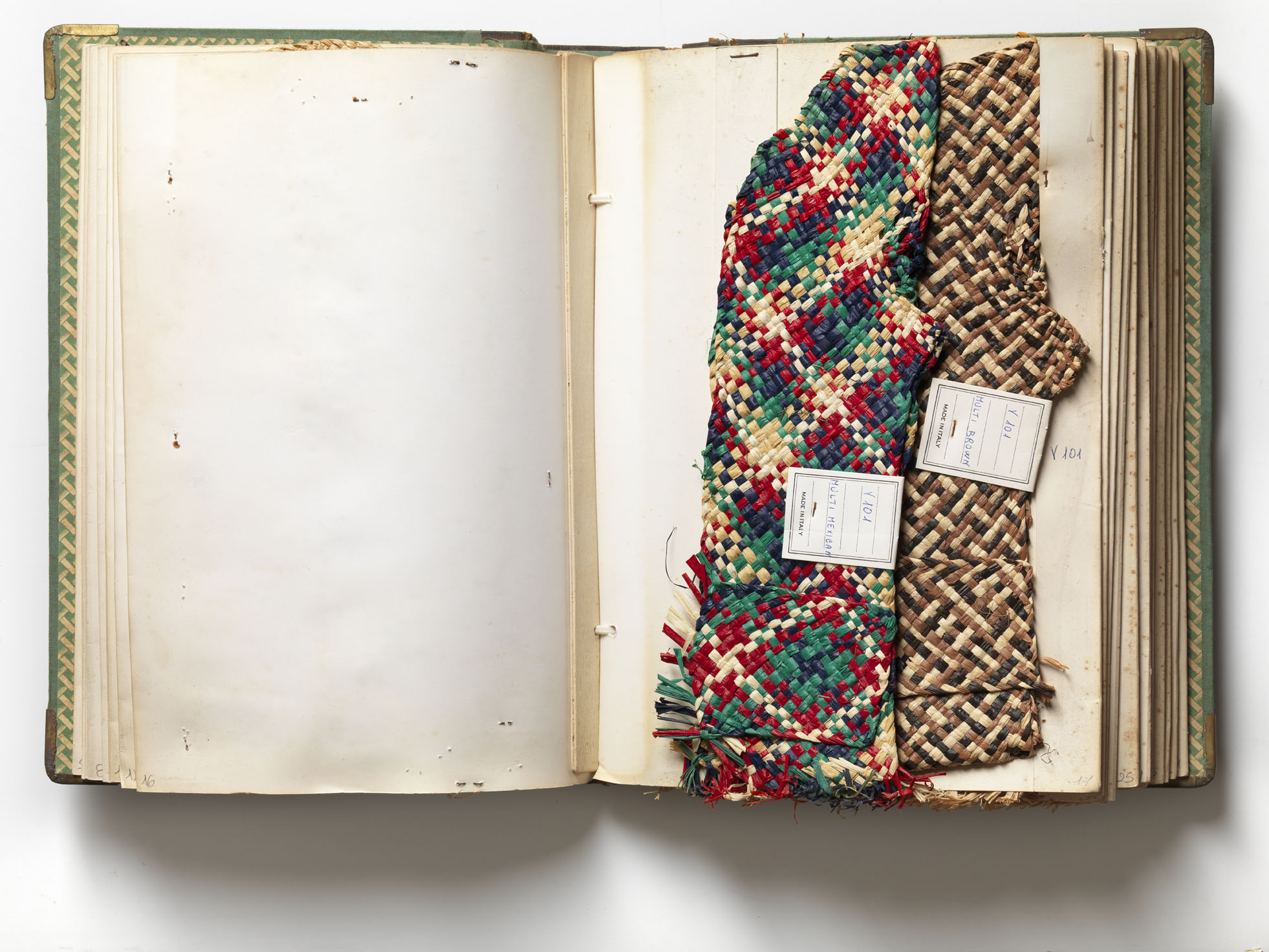
It is here that his figure takes on the fascination of a healer, an engineer and a scholar of anatomy. Ferragamo is not just a craftsman, he studies the mechanics of the foot, the scientific laws that regulate walking, the architecture of the skeleton, the functioning of the muscles; understanding how important the distribution of weight between the centre of the arch of the foot and the extremity, the heel and the toes is, especially in movement. It is indeed in the sixth patent section that the design attitude – of a true contemporary designer – strongly emerges. While producing handcrafted models, very often made-to-measure and exclusive, Ferragamo thought about their reproducibility in multiples: this is demonstrated by the 369 patents filed, technical drawings presenting axonometric or sectional views. Some inventions from the 1930s revolutionised the shoe construction system, such as the patent for the cork wedge heel, invented in 1937 to raise the heel and offer the arch of the foot a stable support. The last section of the exhibition Shoes and Famous Feet is dedicated to the connections and encounters between the creations of the artist shoemaker and their recipients, film stars, aristocrats and models. From Salvatore Ferragamo’s biography, we learn, for example, that Gloria Swanson and Claudette Colbert chose classic shoes, Marlene Dietrich asked for trendy models, the Duchess of Windsor ordered two-tone shoes for the summer and solid colours for the winter, Ingrid Bergman felt at ease in low heels, while Evita Perón preferred exotic leathers. Salvatore Ferragamo 1898-1960 is a retrospective tracing a new journey down memory lane to celebrate the pioneering spirit of an extraordinary personality, yet to be discovered because he could hardly be classified as ordinary.


For further information Museo.Ferragamo.com
